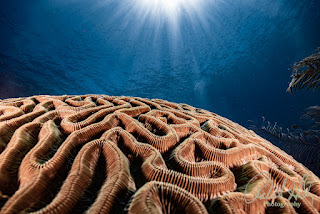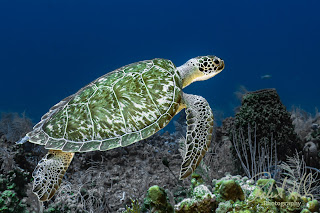Lightroom vs. Photoshop for Underwater Edits: When to Use Each Tool
As underwater photographers, we are fortunate to dive into some of Earth's most awe-inspiring and challenging settings. Every dive invites us into an adventure filled with the potential for new discoveries, showcasing vibrant marine creatures and stunning underwater landscapes that our cameras are eager to capture. However, we must recognize that after the dive and our careful rinsing to remove the saltwater, the journey of each photo has only just begun. In reality, it’s during the post-dive editing stage that the real artistry unfolds. This vital step encompasses more than just tweaking colors or cropping pictures; it’s a captivating craft in its own right. Through editing, we revive our images, enhancing colors, sharpening delicate details, and honestly expressing the atmosphere of our underwater experiences. Each adjustment tells a part of the unique narrative of our adventures beneath the surface, transforming a simple photo into a vibrant reflection of the underwater mesmerizing life.
Most of the time, Lightroom serves us well and meets our needs effectively. However, there are instances when we require the advanced pixel-level capabilities only Photoshop can provide. In this article, I will guide you on recognizing the scenarios where Lightroom suffices and when turning to Photoshop is indispensable. Additionally, I'll explain how to utilize each of these tools with utmost precision. You’ll also discover the strengths of the new AI tools in modern editing and understand where traditional techniques still hold their ground and prove to be highly effective.
I have also included related blog posts that can be used as a reference.
- When Lightroom Is Enough
1. Color Correction and White Balance Adjustments
- Best For: Blue/green water cast correction
- Steps: Use the White Balance Selector (W) on a neutral area like white sand. Adjust Temp and Tint. Use AI Masks to isolate subjects or backgrounds.
Related: How to Use Lightroom to Adjust White Balance in Underwater Photos
2. Backscatter Removal (Minor)
- Best For: Scattered particles in blue water
- Steps: Spot Removal Tool (Q) in Heal mode. Toggle Visualize Spots for better visibility.
Related: Removing Unwanted Reflections and Glare
3. Enhancing Light Rays or Beams
- Best For: Sunbeams breaking through the surface
- Steps: Radial Gradient with Clarity, Exposure, and reduced Dehaze.
4. Batch Editing for Consistency
- Best For: Whole dive site series
- Steps: Edit one and sync to others using Shift+Cmd+S (Mac) or Shift+Ctrl+S (PC).
5. AI-Powered Subject or Background Edits
- Best For: Isolating nudibranchs, fish, divers
- Steps: Mask > Select Subject. Apply sharpening or clarity.
6. Correcting Wide-Angle Lens Distortion
- Best For: Reef or wreck scenes with edge warp
- Steps: Use Lens Corrections Panel. Enable profile and fine-tune distortion and vignette.
7. Bringing Out Hidden Texture
- Best For: Macro shots or coral close-ups
- Steps: Increase Texture, Clarity, Dehaze. Combine with masking for targeted depth.
- When Photoshop Is Necessary
1. Removing Divers or Distractions
- Best For: Fins, bubbles, unwanted gear
- Steps: Use the Lasso Tool (L) and Content-Aware Fill (Shift+F5). Clean up with the Clone Stamp (S).
2. Composite Editing or Background Swaps
- Best For: Replacing murky backgrounds
- Steps: Use Select Subject. Mask and move the subject to a cleaner scene.
Related: Combining Lightroom and Photoshop for Ultimate Underwater Edits
3. Heavy Backscatter or Sand Clouds
- Best For: Messy, close-up wide-angle water
- Steps: Use Dust & Scratches plus the Patch Tool (J). Blend with masks.
4. Banding in Blue Gradients
- Best For: Uneven transitions in blue backgrounds
- Steps: Apply light Gaussian Blur. Add a low-opacity Noise layer.
5. Focus Stacking or Exposure Blending
- Best For: Multi-shot macro or balanced lighting
- Steps: Edit in Photoshop as layers. Auto-align and blend for sharp or dynamic results.
6. Creative Dodging and Burning
- Best For: Emphasizing subjects and shaping light
- Steps: Add 50% gray layer. Paint with white/black for emphasis.
- Lightroom vs. Photoshop AI Tools
- Lightroom AI: Fast and practical for quick masks, subject isolation, and denoising.
- Photoshop AI: Built for creative flexibility; Generative Fill, Remove Tool, Neural Filters.
Final Thoughts
You don't have to choose between Lightroom and Photoshop; you must understand when to use each. Lightroom provides speed, global control, and AI-driven enhancements, while Photoshop offers unparalleled flexibility for precise edits and creative storytelling.
As underwater photographers, our adventure starts beneath the waves, where the ocean presents vibrant scenes and unique creatures. However, the actual emotional resonance of our photos is crafted in the digital darkroom. By selecting the appropriate tools and techniques to enhance our images at the right moment, we can make our photographs come alive and convey powerful stories that resonate with viewers.
- 💡 Read more Lightroom tips at RobertHerb.blogspot.com.
- 💡 Join my upcoming online training program – Learn to enhance your underwater shots with Adobe Lightroom! Sign up for a FREE "Before & After" Gallery.
- 💡 Share your processed photos on social media using #RobertHerbPhotography.
- 💡 Have questions? Email me at bob@robertherb.com.
Written by Robert Herb – Empowering underwater photographers to capture and enhance the beauty of our oceans.
Stay tuned for more in-depth insights into underwater photography. Let’s dive deeper into the art and craft of capturing the marine world! If you have any comments or suggestions, I’d love to hear them.
Get ready for an exciting underwater photography adventure! For more details on my upcoming online training course, check out my "Training" page at RobertHerb.com or email me at bob@robertherb.com.
Sincerely,
Bob Herb
|
|





Comments
Post a Comment
Please let me know your comments.